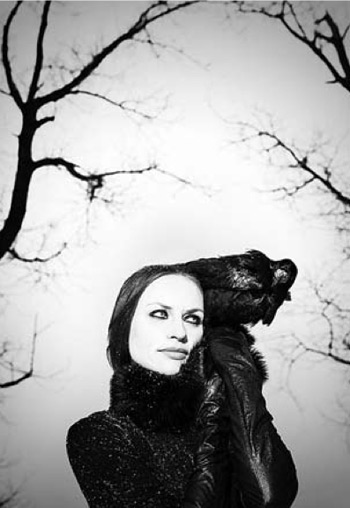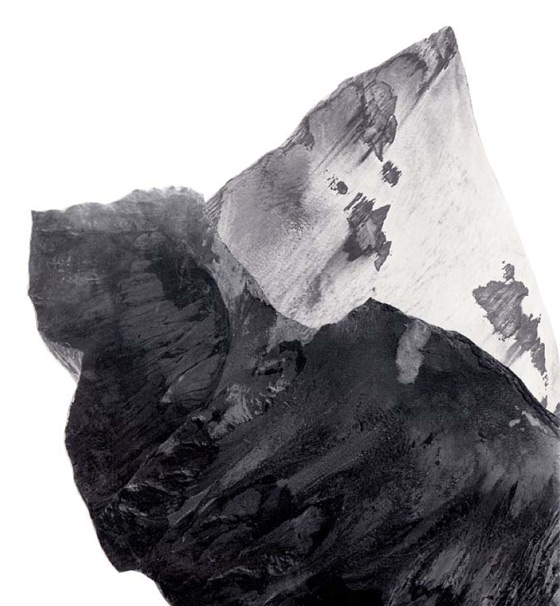|
|
| Kristīne Alksne Santa Mičule, Student, Art Academy of Latvia | |
| Artist Kristīne Alksne (born 1980) has recently been living and working in Berlin. Before that she spent more than 10 years in Italy, where she graduated from the Academy of Fine Arts of Brera (Accademia di Belle Arti di Brera) in Milan and began her artist’s career at quite a young age. Having achieved recognition in the West, Alksne entered the Latvian art scene with a solo exhibition Roaming Around II (2009) at the project room Ēdnīca of the Latvian Centre for Contemporary Art in Andrejsala. The artist has displayed her works at seven solo exhibitions in Italy, and has participated in more than 60 group exhibitions in Europe and the USA, including the 3rd Moscow International Biennale for Young Art (2012) and the exhibition Text = Image at kim? Contemporary Art Centre in Riga (2011). Kristīne Alksne works in various media and techniques, but most of her works are spatial installations. The artist often makes references to images from nature, reducing these to the scale of detail. The visual code of these details or fragments is like a finely elaborated collage made up of abstract and ornamental structures. These function not only as a decoratively formal element, but also carry an associative meaning, playing upon the materiality, texture and the visual effects of the surface as a significant part of the message. Speaking about the semantics of the material, Alksne defers to Joseph Beuys and his views on the active role of the material used in shaping the meaning of a work of art. | |
 Kristīne Alksne. 2012 Photo: Annette Staack Photo from the private archive of Kristīne Alksne | |
| On first viewing of Kristīne Alksne’s works, one is tempted to draw parallels with Japanese haiku – beauty is expressed through the fleeting and the unpretentious; the language of nature imagery is characterized by transparency and things which are left half-said, thus projecting into the viewer’s consciousness slightly transcendental and poeticallycharged associations with the outwardly invisible side of the world. The laconic and self-sufficient forms characteristic of minimalist art have an important role in Alksne’s works, however, the refined elegance of the structures created by the artist distinguishes them from the direct and somewhat raw simplicity of minimalism. Forms of nature are often portrayed in an entropic and diminishing state, indirectly pointing to the contrast between eternity and the moment, the evanescent and the perpetual, and for the artist these notions are an indispensable part of the “external” world. This is especially evident in her collages, where great importance is attributed to the absence of form, or empty spaces, which turns the composition into a partially abstract interplay of rhythms and ornaments. Nature enters into Kristīne Alksne’s works also as traces of the environment on existing (ready-made) objects – for example, the work Muluna (2004), where traditional Sicilian wallpaper patterns are transferred onto watermelons. An important factor in the creation of these unusual watermelon sculptures was the context of the geographical location where they were created, i.e., during that time the artist participated at the art festival Kals Art in Palermo, Sicily. This brings us to another important element of Alksne’s works: the principle of site-specific work, where the specifics and context of a place become the catalyst for a work. Both in her collages as well as her spatial installations the site as a phenomenon becomes embodied in the art object, thus from geographically specific becoming general, and from the factual – abstractly symbolic. An emotional and intuitive approach transforms the artworks into a testimony of the artist’s experience, also adding a dimension of time to her compositions. Time as subject matter, although present in many Kristīne Alksne’s works, is not presented in an obvious manner, but rather can be “read between the lines”. One of the most popular series of works by Alksne is Displaced Features (2011), which is regularly exhibited in smaller or larger art events of various contexts. This series consists of installations made up of books cemented to a surface and their pages carved into cliff-like images, and paintings with repeating motives of abstract cross-sections of mountain ranges. The sculptures take on a certain charisma, both with their unusually refined plasticity as well as the stream of various meanings and associations which literally pour over the viewer. The artist describes the key ideas of her works as prototypes for future monuments, trying to capture the instantaneous and to halt the unstoppable, incorporating these into an image that symbolizes the interaction between human beings and things created by nature. | |
 Kristīne Alksne. Untitled. Collage. 20x20 cm. 2012 Publicity photos Courtesy of the artist | |
| By collecting discarded books (most often encyclopaedias) from the streets of Berlin and transforming them into landscape sculptures, Kristīne Alksne first of all reflects on the gradual disappearance of books as a significant element of culture in our lives, or speaking in terms of the analogy used for the composition of the installations, the descent from the pedestal of the cult object. The works mentioned here are united and characterized by their fragile and ethereal form, as well as a meditatively introspective emotional key. However, a harsher mood can be noted in the joint project Meža Measure (2012), created together with a Berlin-based Latvian artist Margo (real name Margita Zālīte), which they presented at the art festival Survival Kit 4. Meža Measure was a spatial installation which at the opening of the festival was supplemented by the artists’ performance. This work by Kristīne Alksne and Margo was based on outspoken opposition to the set theme of the festival, which was downshifting(1). The incompatibility and impossibility of this subject in relation to the contemporary art situation was the main departure point for the performance. The artists interpreted the theme from a critical position, with a slightly acerbic and ironical view on downshifting and the all too “relaxed muscles” of the local art scene. Alksne made use of the motif of downshifting also literally, covering the installation space with a “growth” of hair which had been carefully collected from hairdressing salons in Berlin and Riga. Thus she symbolically returned to her first installation of 2001, which was a carpet woven from hair. During the performance, the national anthem of Latvia was played at a slowed down tempo, the macabre rendition ironically pointing to the dullness of complacency and the “slow” way of life. The performance was not just a commentary on the theme of the festival, but it also revealed the artists’ view of the Latvian art scene where, in their opinion, the main reference point of artistic value is still dominated by the harmoniously beautiful: the national anthem, the dancing long-haired women and the prancing piglets as images embodying the traditional values of Latvian art which have survived to the present day and have become embedded also in contemporary art. As a contrast to the dancers as an embodiment of the classically beautiful, there was the action of splitting hairs: in the room of the installation, Margo, using an axe, was chopping clumps of hair. Amidst all this mayhem there were piglets running around, and disco smoke, all of which intensified the grotesqueness of the activities taking place. The aim of the performance was to bring the spontaneous event (nothing had been planned out beforehand) to an incomprehensible absurdity which, to Margo and Kristīne Alksne, downshifting is. Their performance presented downshifting as just another fad of Western consumer society, not a natural phenomenon. And downshifting becomes even more unnatural when it gets introduced into the Latvian art milieu. It is rumoured that due to its special effects and honest attitude Meža Measure became the favourite of many festival guests. Translation into English: Vita Limanoviča (1) In the context of the festival the term downshifting was defined as a worldwide movement and code of social behaviour in which people slow down the pace of life and escape from the “rat race”, in other words ease up and devote themselves to self-development and rest. | |
| go back | |







